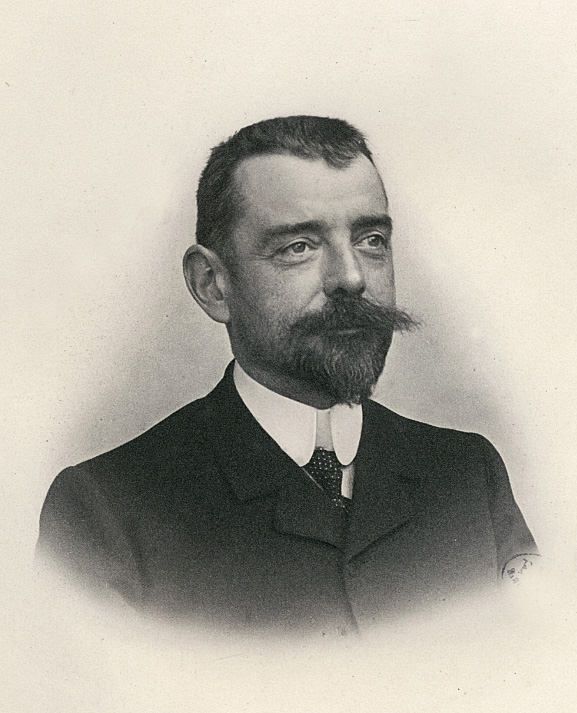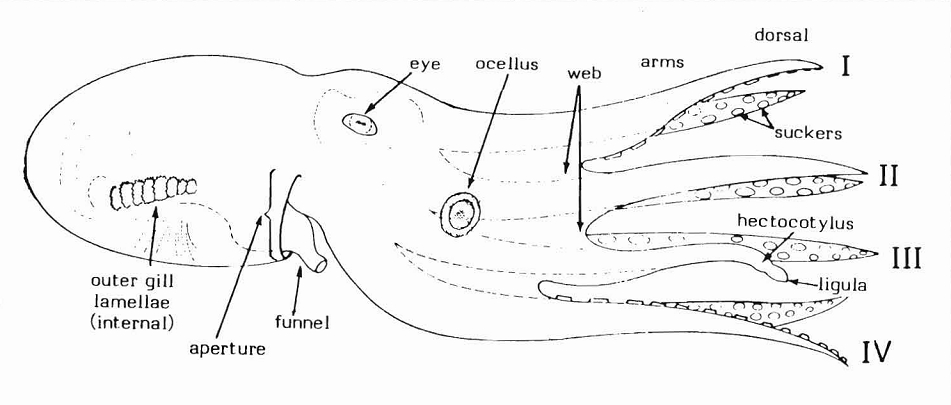|
Vitreledonella Alberti
''Vitreledonella alberti'' is an incirrate octopus, in the genus ''Vitreledonella'' of the family Amphitretidae. It was named ''alberti'' in honor of Albert I, Prince of Monaco. Description It is a transparent octopus. It was discovered by Louis Joubin in 1924,Joubin, 1924: ''Contribution à l'étude des céphalopodes de l'Atlantique Nord (4e Série)''. Résultats des Campagnes scientifiques accomplies sur son yacht par Albert I, Prince souverain de Monaco, vol. 67, pp.1-113. six years after the discovery of its better-known congener ''Vitreledonella richardi ''Vitreledonella richardi'', also known as the glass octopus, is an incirrate octopus. It is in the genus ''Vitreledonella'' and of the family Amphitretidae. Description ''Vitreledonella richardi'' is a transparent, gelatinous, and almost co ...''. References Octopuses Molluscs described in 1924 {{Octopus-stub ... [...More Info...] [...Related Items...] OR: [Wikipedia] [Google] [Baidu] |
Louis Joubin
Louis Marie Adolphe Olivier Édouard Joubin (27 February 1861 in Épinal – 24 April 1935 in Paris) was a professor at the Muséum national d'Histoire naturelle in Paris. He published works on nemerteans, chaetognatha, cephalopods, and other molluscs. He served as an assistant to Henri de Lacaze-Duthiers, subsequently becoming director of the laboratories at Banyuls-sur-Mer (1882) and Roscoff (1884). Later on, he became an instructor at the University of Rennes,Prosopo Sociétés savantes and in 1903 succeeded Edmond Perrier as ''chaire des mollusques, des vers et des zoophytes'' at the Muséum national d'Histoire ... [...More Info...] [...Related Items...] OR: [Wikipedia] [Google] [Baidu] |
Incirrina
Incirrata (or Incirrina) is a suborder of the order Octopoda. The suborder contains the classic " benthic octopuses," as well as many pelagic octopus families, including the paper nautiluses. The incirrate octopuses are distinguished from the cirrate octopuses by the absence in the former of the "cirri" filaments (found with the suckers) for which the cirrates are named, as well as by the lack of paired swimming fins on the head, and lack of a small internal shell (the "shell" of '' Argonauta'' species is not a true shell, but a thin calcite egg case). Classification *CLASS CEPHALOPODA **Subclass Nautiloidea: nautilus **Subclass †Ammonoidea: ammonites **Subclass Coleoidea ***Superorder Decapodiformes: squid, cuttlefish ***Superorder Octopodiformes ****Family † Trachyteuthididae (''incertae sedis'') ****Order Vampyromorphida: vampire squid ****Order Octopoda *****Genus †'' Keuppia'' (''incertae sedis'') *****Genus †'' Palaeoctopus'' (''incertae sedis'') *****Genu ... [...More Info...] [...Related Items...] OR: [Wikipedia] [Google] [Baidu] |
Octopus
An octopus ( : octopuses or octopodes, see below for variants) is a soft-bodied, eight- limbed mollusc of the order Octopoda (, ). The order consists of some 300 species and is grouped within the class Cephalopoda with squids, cuttlefish, and nautiloids. Like other cephalopods, an octopus is bilaterally symmetric with two eyes and a beaked mouth at the center point of the eight limbs. The soft body can radically alter its shape, enabling octopuses to squeeze through small gaps. They trail their eight appendages behind them as they swim. The siphon is used both for respiration and for locomotion, by expelling a jet of water. Octopuses have a complex nervous system and excellent sight, and are among the most intelligent and behaviourally diverse of all invertebrates. Octopuses inhabit various regions of the ocean, including coral reefs, pelagic waters, and the seabed; some live in the intertidal zone and others at abyssal depths. Most species grow quickly, mature earl ... [...More Info...] [...Related Items...] OR: [Wikipedia] [Google] [Baidu] |
Genus
Genus ( plural genera ) is a taxonomic rank used in the biological classification of living and fossil organisms as well as viruses. In the hierarchy of biological classification, genus comes above species and below family. In binomial nomenclature, the genus name forms the first part of the binomial species name for each species within the genus. :E.g. '' Panthera leo'' (lion) and '' Panthera onca'' (jaguar) are two species within the genus ''Panthera''. ''Panthera'' is a genus within the family Felidae. The composition of a genus is determined by taxonomists. The standards for genus classification are not strictly codified, so different authorities often produce different classifications for genera. There are some general practices used, however, including the idea that a newly defined genus should fulfill these three criteria to be descriptively useful: # monophyly – all descendants of an ancestral taxon are grouped together (i.e. phylogenetic analysis should c ... [...More Info...] [...Related Items...] OR: [Wikipedia] [Google] [Baidu] |
Vitreledonella
''Vitreledonella'' is a genus of mesopelagic octopods from the family Amphitretidae which contains two species, one of which is the glass octopus. These octopods have the sucker on their arms arranged in a single series with the suckers widely separated from each other. The third left arm is hectocotylised with a spherical vesicle at the distal end and in males the other arms have suckers which are enlarged beyond the web. The eye has strong lateral compression with a near rectangular shape in lateral view and with the width equal to the diameter of the lens. There is a ventral, blunt rostrum-like extension on the eye which contains iridescent tissue above the eye. The opening to the mantle is broad, the radula is multicuspid and linear in form with the first and second lateral tooth each being unicuspid, which means that this species has a heteroglossan radula. The long and slender digestive gland is spindle-shaped and the stomach is positioned dorsally to the digestive gland. ... [...More Info...] [...Related Items...] OR: [Wikipedia] [Google] [Baidu] |
Family (biology)
Family ( la, familia, plural ') is one of the eight major hierarchical taxonomic ranks in Linnaean taxonomy. It is classified between order and genus. A family may be divided into subfamilies, which are intermediate ranks between the ranks of family and genus. The official family names are Latin in origin; however, popular names are often used: for example, walnut trees and hickory trees belong to the family Juglandaceae, but that family is commonly referred to as the "walnut family". What belongs to a family—or if a described family should be recognized at all—are proposed and determined by practicing taxonomists. There are no hard rules for describing or recognizing a family, but in plants, they can be characterized on the basis of both vegetative and reproductive features of plant species. Taxonomists often take different positions about descriptions, and there may be no broad consensus across the scientific community for some time. The publishing of new data and opi ... [...More Info...] [...Related Items...] OR: [Wikipedia] [Google] [Baidu] |
Amphitretidae
Amphitretidae is a family of mesopelagic octopods which contains three subfamilies, formerly classified as families in their own right. It is classified in the superfamily Octopodoidea. Species in the family Amphipetridae are characterised by having a single row of suckers on each arm (uniserial suckers), a gelatinous body and non hemispherical eyes. Taxonomy There are three subfamilies within Amphipetridae: * Subfamily Amphitretinae Hoyle, 1886 ** Genus ''Amphitretus'' Hoyle, 1885 * Subfamily Bolitaeninae Chun, 1911 ** Genus ''Bolitaena'' Steenstrup, 1859 ** Genus ''Japetella'' Hoyle, 1885 ** Genus '' Dorsopsis'' Thore, 1949 (''taxon inquirendum'') * Subfamily Vitreledonellinae Robson, 1932 ** Genus ''Vitreledonella'' Joubin Louis Marie Adolphe Olivier Édouard Joubin (27 February 1861 in Épinal – 24 April 1935 in Paris) was a professor at the Muséum national d'Histoire naturelle in Paris. He published works on nemerteans, chaetognatha, cephalopods, and other M .. ... [...More Info...] [...Related Items...] OR: [Wikipedia] [Google] [Baidu] |
Albert I, Prince Of Monaco
Albert I (Albert Honoré Charles Grimaldi; 13 November 1848 – 26 June 1922) was Prince of Monaco from 10 September 1889 until his death. He devoted much of his life to oceanography, exploration and science. Alongside his expeditions, Albert I made reforms on political, economic and social levels, bestowing a constitution on the principality in 1911. Early life Born on 13 November 1848 in Paris, France, the son of Prince Charles III (1818–1889), and Countess Antoinette de Mérode-Westerloo (1828–1864), a Belgian noblewoman, maternal aunt of Donna Maria Vittoria dal Pozzo, Princess della Cisterna, Duchess consort of Aosta and Queen consort of Spain. As a young man, Prince Albert served in the Spanish Navy as a navigator. During the Franco-Prussian War, he joined the French Navy where he was awarded the Legion of Honor. In addition to his interest in oceanographic studies, Albert had a keen interest in the origins of man and in Paris, he founded the "''Institute for ... [...More Info...] [...Related Items...] OR: [Wikipedia] [Google] [Baidu] |
Congener (biology)
Biological specificity is the tendency of a characteristic such as a behavior or a biochemical variation to occur in a particular species. Biochemist Linus Pauling stated that "Biological specificity is the set of characteristics of living organisms or constituents of living organisms of being special or doing something special. Each animal or plant species is special. It differs in some way from all other species...biological specificity is the major problem about understanding life." Biological specificity within ''Homo sapiens'' ''Homo sapiens'' has many characteristics that show the biological specificity in the form of behavior and morphological traits. Morphologically, humans have an enlarged cranial capacity and more gracile features in comparison to other hominins. The reduction of dentition is a feature that allows for the advantage of adaptability in diet and survival. As a species, humans are culture dependent and much of human survival relies on the culture and so ... [...More Info...] [...Related Items...] OR: [Wikipedia] [Google] [Baidu] |
Vitreledonella Richardi
''Vitreledonella richardi'', also known as the glass octopus, is an incirrate octopus. It is in the genus ''Vitreledonella'' and of the family Amphitretidae. Description ''Vitreledonella richardi'' is a transparent, gelatinous, and almost colorless meso- to bathypelagic octopod found worldwide in tropical and subtropical seas with a mantle length up to and a total length up to in adults. The upper three pairs of arms are subequal in length; in juveniles about as long as the mantle, in adults two to three times mantle length. The fourth, ventral pair is slightly shorter. Suckers are small, widely separated, and in a single series. In males, the left arm III is hectocotylized, with a spherical vesicle near the tip, but is not detachable. The large ampulla and the elongate accessory gland lie out among the internal reproductive organs, notable among mature males alongside its reproductive anatomical counterparts. Its eyes are rectangular, as seen from the side. In accordance ... [...More Info...] [...Related Items...] OR: [Wikipedia] [Google] [Baidu] |
Octopuses
An octopus ( : octopuses or octopodes, see below for variants) is a soft-bodied, eight- limbed mollusc of the order Octopoda (, ). The order consists of some 300 species and is grouped within the class Cephalopoda with squids, cuttlefish, and nautiloids. Like other cephalopods, an octopus is bilaterally symmetric with two eyes and a beaked mouth at the center point of the eight limbs. The soft body can radically alter its shape, enabling octopuses to squeeze through small gaps. They trail their eight appendages behind them as they swim. The siphon is used both for respiration and for locomotion, by expelling a jet of water. Octopuses have a complex nervous system and excellent sight, and are among the most intelligent and behaviourally diverse of all invertebrates. Octopuses inhabit various regions of the ocean, including coral reefs, pelagic waters, and the seabed; some live in the intertidal zone and others at abyssal depths. Most species grow quickly, mature earl ... [...More Info...] [...Related Items...] OR: [Wikipedia] [Google] [Baidu] |


